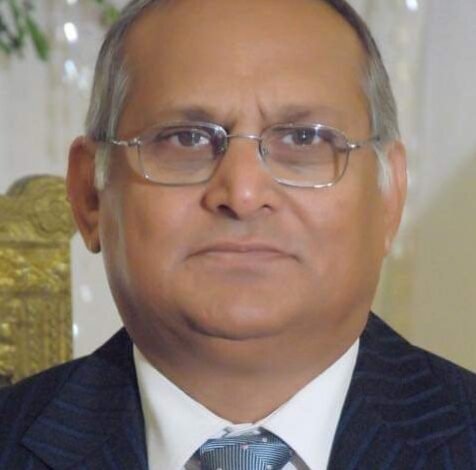Stalemate in the East

By. Ghulam Haider Shaikh
The Russia-Ukraine war, now stretching into its fourth year, continues to shape the trajectory of global politics, economics, and security. Once thought to be a swift military operation by Moscow, the conflict has evolved into one of the most enduring and complex geopolitical confrontations of the 21st century. The initial weeks of the invasion were marked by rapid Russian advances and fierce Ukrainian resistance, but it soon became evident that the war would not end quickly. Both sides dug in, and the frontlines stabilized into a bloody stalemate, with heavy casualties and massive destruction in cities like Bakhmut, Avdiivka, and Mariupol.
In recent months, Ukraine has shifted from conventional battlefield strategies to more asymmetric tactics, including a new wave of drone warfare. A recent operation, referred to by Ukrainian sources as “Spider’s Web,” targeted major Russian airbases, including those in Siberia. Reports claimed the destruction or damage of over 40 warplanes, including strategic bombers, demonstrating Ukraine’s increasing ability to hit targets deep inside Russian territory. These drone strikes not only inflicted material damage but also psychological shock, challenging Russia’s sense of territorial invulnerability.
Russia responded with airstrikes on Ukrainian civilian centers, resulting in severe casualties, including women and children. The retaliatory nature of these strikes reflects both the Kremlin’s strategy of pressure through fear and its growing frustration with Ukraine’s technological evolution. The war has also taken on a cyber dimension. Ukrainian intelligence recently claimed responsibility for a major cyberattack on Tupolev, a Russian aerospace giant. Over 4.4 GB of sensitive data, including designs and personnel files, were reportedly stolen. This breach highlights the increasing reliance on cyberwarfare, not just for espionage but also to undermine strategic capabilities and morale.
Ukrainian President Volodymyr Zelenskyy recently stated that the end of the war might be closer than anticipated. He cited advances in drone technology, improved air defenses, and Western backing as factors tilting the balance. While such statements offer hope, the reality remains that neither side appears willing to compromise. Russia retains vast reserves of manpower, military stockpiles, and access to weapons through allies like Iran and North Korea. Sanctions have undoubtedly impacted Russia’s economy but have failed to force a strategic retreat.
Diplomatic efforts remain limited and largely symbolic. The most recent Istanbul meeting resulted in a humanitarian agreement to exchange the remains of over 6,000 dead soldiers, but no substantial progress toward a ceasefire was achieved. Both Moscow and Kyiv are entrenched in maximalist positions. For Ukraine, the full restoration of its territorial sovereignty is non-negotiable. For Russia, anything less than a geopolitical gain would be considered a strategic defeat. As a result, peace remains elusive.
This war has transcended its regional origins. It is no longer merely a dispute over borders or NATO expansion. It has become a confrontation between two global visions — a democratic, Western-aligned Ukraine versus an authoritarian, revanchist Russia seeking to rewrite post-Cold War security arrangements. The repercussions of this conflict are felt far beyond Eastern Europe. Global inflation, disrupted energy supplies, food insecurity due to stalled Ukrainian grain exports, and shifts in international trade are all direct consequences.
The war has also prompted a reshaping of global alliances. The West, led by the United States and European Union, has rallied around Ukraine. Billions of dollars in military and humanitarian aid have been funneled into Kyiv. However, the consistency of this support is not guaranteed. Internal political divisions in countries like the U.S., especially with upcoming elections, have cast uncertainty over the future of aid packages. Former President Donald Trump’s remarks that Ukraine and Russia “might have to keep fighting” suggest a potential shift in policy should leadership in Washington change.
Meanwhile, China has maintained a calculated neutrality, continuing to import Russian oil at discounted rates while avoiding direct confrontation with the West. India walks a diplomatic tightrope, importing arms and energy from Russia while engaging with Western powers. The Global South remains largely ambivalent, hesitant to choose sides in what they perceive as a European war with global consequences.
The war could unfold into several possible scenarios. The most optimistic outlook involves a negotiated ceasefire by the end of 2025, possibly mediated by neutral states or international organizations. This would likely include a demilitarized zone and security guarantees. A less hopeful but highly plausible scenario is that the war becomes a “frozen conflict,” akin to the Korean Peninsula, with no formal peace but no active large-scale combat either. The most dangerous possibility remains escalation. Should Russia resort to tactical nuclear weapons or should NATO forces be directly drawn in due to border incidents or provocations, the conflict could spiral into a broader European or global war.
The war has become not only a test of Ukraine’s resilience and military strategy but also of Western resolve and international diplomacy. It reflects a new age of warfare — one where drones, cyberattacks, and psychological operations are as critical as tanks and artillery. It also demonstrates that military might alone cannot guarantee swift victories in the modern era.
What remains clear is that this war has no easy exit. Both sides are locked in a high-stakes confrontation with profound implications for the international order. The price being paid in human lives, economic instability, and global insecurity is enormous. Yet the incentives for ending the war appear weaker than the forces driving its continuation.
Unless the international community, particularly major powers like the United States, China, and the EU, commit seriously to a diplomatic solution, the conflict may not end with a handshake but with exhaustion, stalemate, and an uneasy silence — until the next flare-up.
Peace may indeed be closer than it appears, but only if the world decides to pursue it with unity, pressure, and a long-term vision.





